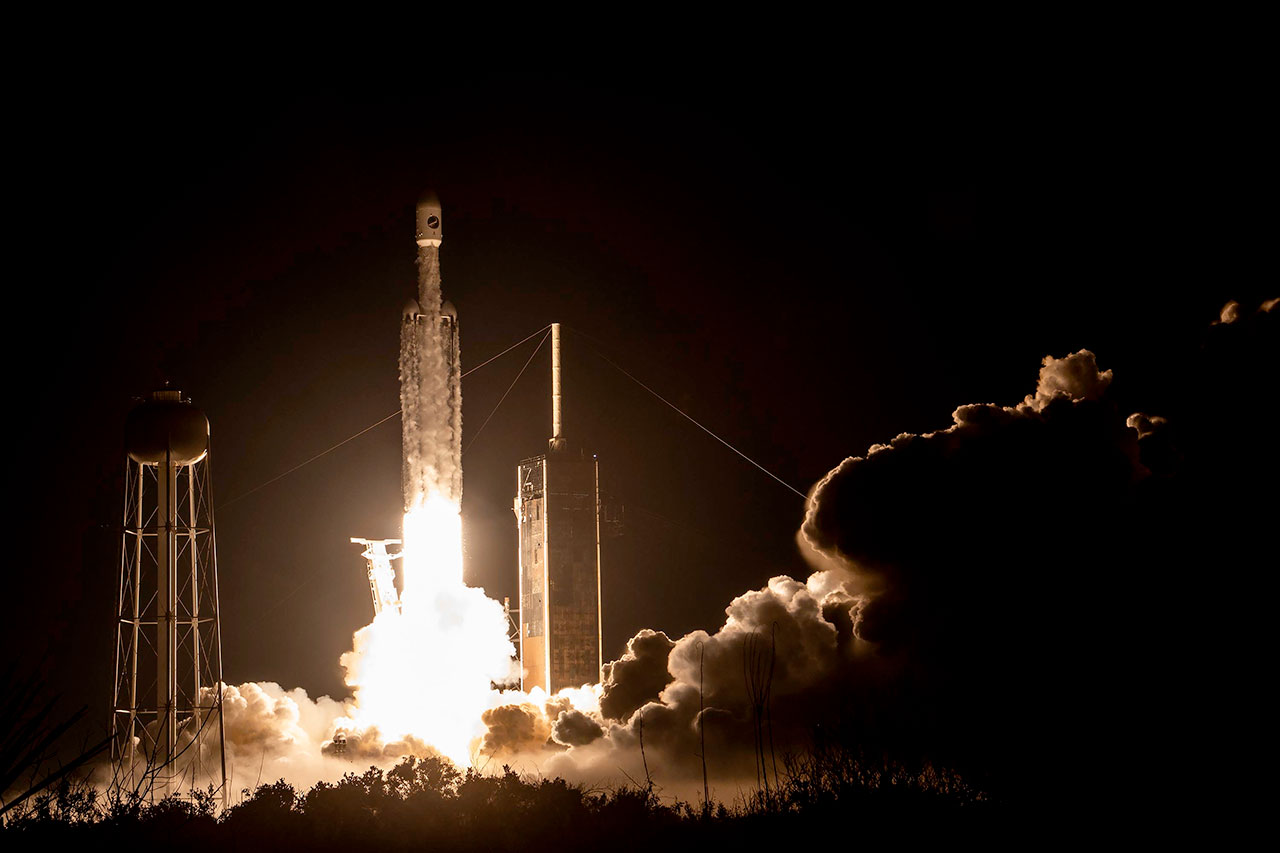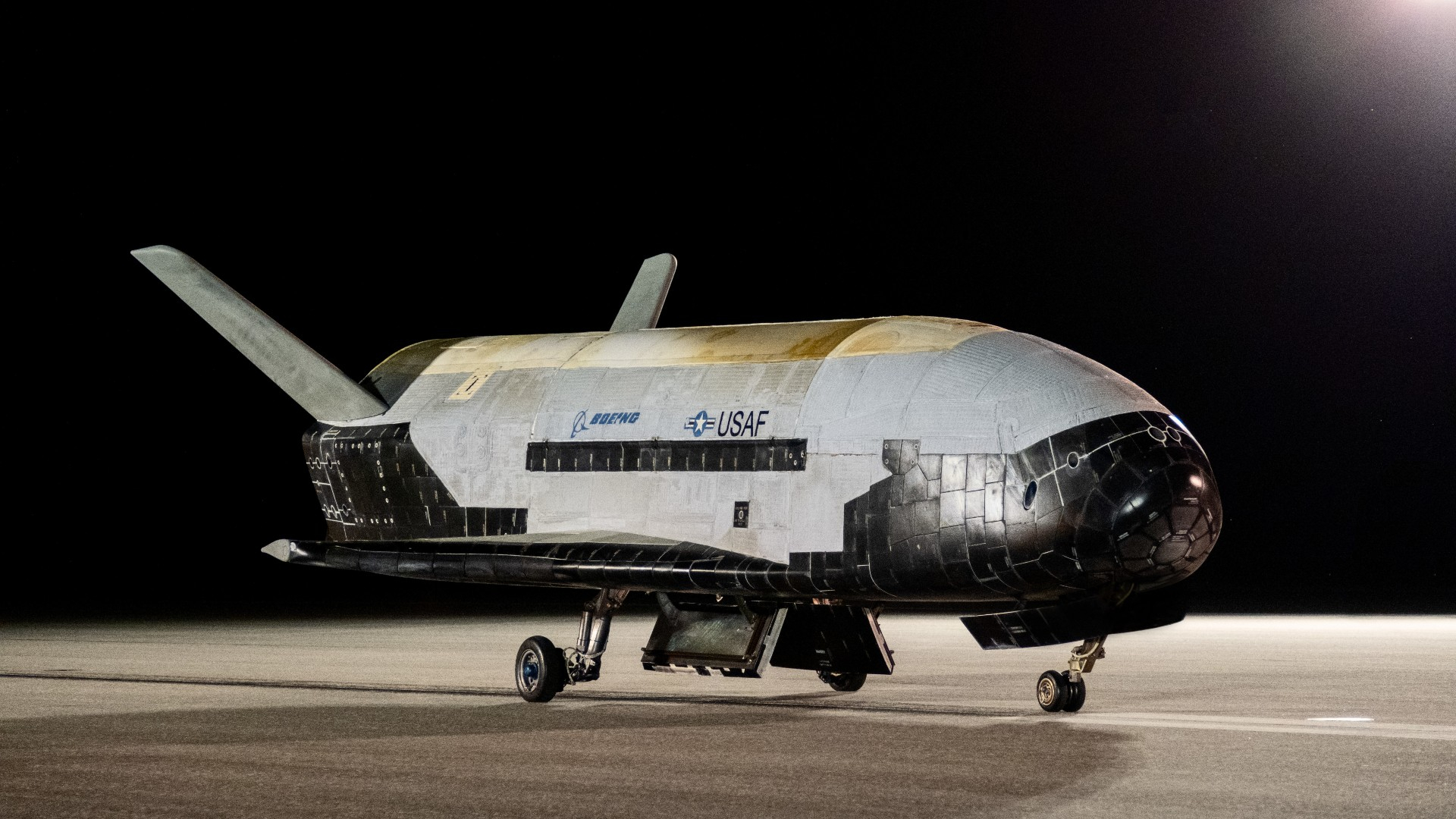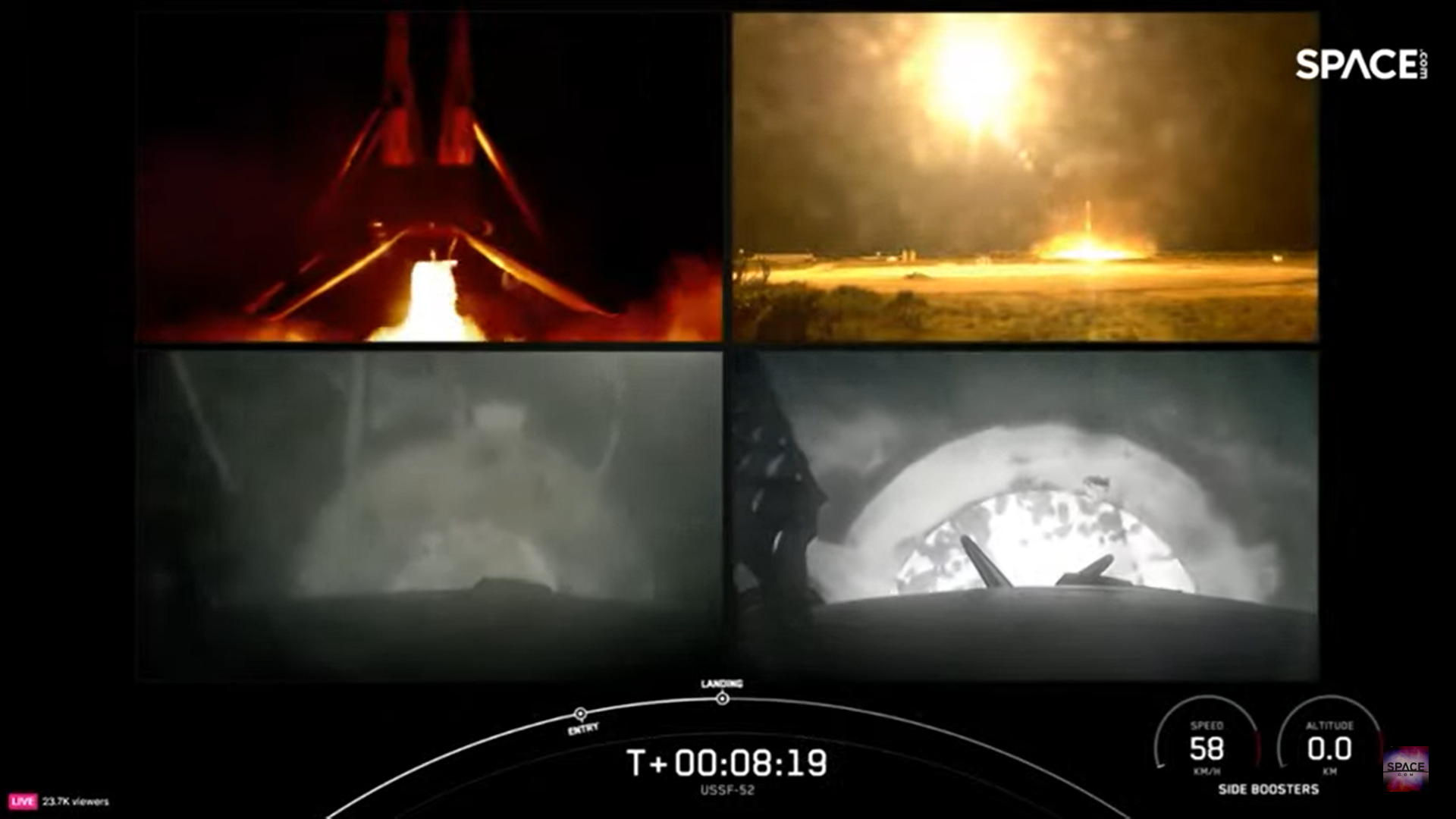SpaceX Falcon Heavy rocket launches mysterious X-37B space plane for US Space Force after delays
The U.S. military's X-37B space plane has embarked on its latest clandestine mission at last.
The robotic X-37B lifted off atop a SpaceX Falcon Heavy rocket from NASA's Kennedy Space Center (KSC) in Florida Thursday night (Dec. 28) at 8:07 p.m. EST (0107 GMT on Dec. 29) after weeks of delays. SpaceX first two attempts to launch the secretive X-37-B military space plane earlier this month were delayed by bad weather and a ground equipment issue.
Thursday's launch marked the seventh liftoff for the X-37B to date but its first ride on SpaceX's Falcon Heavy, the second-most powerful rocket currently in operation (after NASA's Space Launch System). It was SpaceX's 97th launch of 2023, with the next launch just hours later when Falcon 9 rocket launched 23 Starlink satellites from the nearby Cape Canaveral Space Force Station at 11:01 p.m. EST (0401 GMT).
SpaceX shut down its livestream of the Falcon Heavy launch before the X-37B space plan was deployed in its final orbit at the request of the U.S. Space Force.
The new X-37B mission, known as OTV-7 ("Orbital Test Vehicle-7") as well as USSF-52, will apparently take advantage of the rocket's muscle; the flight's main objectives "include operating the reusable space plane in new orbital regimes," Space Force officials wrote in a mission preview last month.
Related: The US Space Force's secretive X-37B space plane: 10 surprising facts
The Falcon Heavy consists of three modified, strapped-together first stages of SpaceX's workhorse Falcon 9 rocket. The central booster in this lineup carries a second stage, which is topped by the payload.
Breaking space news, the latest updates on rocket launches, skywatching events and more!
The Heavy's three first stages are reusable, as we saw during today's liftoff: The two outer boosters came back for safe touchdowns at Cape Canaveral Space Force Station, which is next door to KSC, about 8.5 minutes after liftoff. It was the fifth launch and landing for the two boosters, whose resume also includes the launch of NASA's Psyche asteroid probe, which took flight this past October.
"We have successfully landed both Falcon Heavy side boosters at Landing Zone 1 and Landing Zone 2," said Jessie Anderson, SpaceX's mechanical production and engineering manager, in a live webcast. "With these two side boosters, this marks the 257th and 258th overall successful landings of an orbital class rocket."
The Heavy's central booster flew for the first and only time today; it ditched intentionally into the Atlantic Ocean after launch, having expended too much of its fuel to return to Earth for recovery and reuse.
The X-37B looks like NASA's retired space shuttle but is much smaller. The uncrewed vehicle is just 29 feet (8.8 meters) long, with a wingspan of 15 feet (4.6 m). Each shuttle orbiter, by contrast, was 122 feet (37 m) long and had a wingspan of more than 78 feet (24 m).
The Space Force is thought to own two X-37B vehicles, both of them built by Boeing. The space planes are used primarily as orbital testbeds, allowing the military to see how instruments perform and behave in the space environment. We don't know much about this gear; details about X-37B missions, from their flight plans to their main payloads, tend to be classified.
For example, the Space Force lays out OTV-7's objectives only in broad strokes. In addition to the "new orbital regimes" goal, the flight "will expand the United States Space Force's knowledge of the space environment by experimenting with future space domain awareness technologies," Space Force officials wrote in the mission description. "These tests are integral in ensuring safe, stable and secure operations in space for all users of the domain."
Not everything the space plane hauls to orbit is hush-hush, however; it routinely takes some civilian gear up as well. For example, a NASA experiment called Seeds-2 is hitching a ride on OTV-7.
Seeds-2 "will expose plant seeds to the harsh radiation environment of long-duration spaceflight," Space Force officials wrote. The project "will build upon the successes of prior experiments, paving the way for future crewed space missions," they added.
It's unclear how long OTV-7 will last, but it's safe to assume the space plane will be up there for a while. The previous six X-37B missions lasted more than seven months apiece, and each one bested its predecessors' duration:
- OTV-1: 224 days (launched on April 22, 2010, landed on Dec. 3, 2010)
- OTV-2: 468 days (launched on March 5, 2011, landed on June 16, 2012)
- OTV-3: 674 days (launched on Dec. 11, 2012, landed on Oct. 17, 2014)
- OTV-4: 718 days (launched on May 20, 2015, landed on May 7, 2015)
- OTV-5: 780 days (launched on Sept. 7, 2017, landed on Oct. 27, 2019)
- OTV-6: 908 days (launched on May 17, 2020, landed on Nov. 12, 2022)
The previous six missions all flew in low Earth orbit, just a few hundred miles above our planet. The Falcon Heavy could take the X-37B much higher, potentially all the way to geosynchronous orbit, about 22,000 miles (35,000 kilometers) up. But it's unclear if that's the plan for OTV-7.
The first five X-37B flights lifted off atop United Launch Alliance Atlas V rockets. SpaceX has provided launch services for the most recent two: OTV-6 flew on a Falcon 9 and OTV-7 on a Heavy.
The Falcon Heavy debuted in February 2018 with a highly anticipated test flight that sent SpaceX founder and CEO Elon Musk's red Tesla Roadster into orbit around the sun. The big rocket now has nine flights under its belt, including five in 2023.

Michael Wall is a Senior Space Writer with Space.com and joined the team in 2010. He primarily covers exoplanets, spaceflight and military space, but has been known to dabble in the space art beat. His book about the search for alien life, "Out There," was published on Nov. 13, 2018. Before becoming a science writer, Michael worked as a herpetologist and wildlife biologist. He has a Ph.D. in evolutionary biology from the University of Sydney, Australia, a bachelor's degree from the University of Arizona, and a graduate certificate in science writing from the University of California, Santa Cruz. To find out what his latest project is, you can follow Michael on Twitter.



